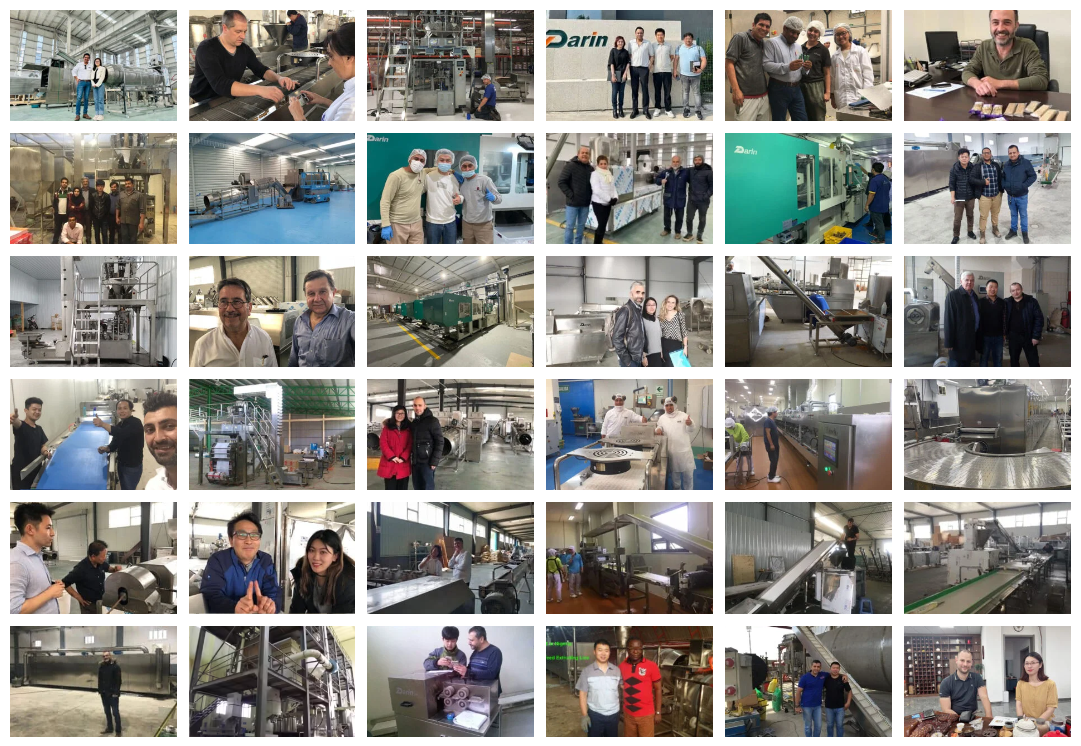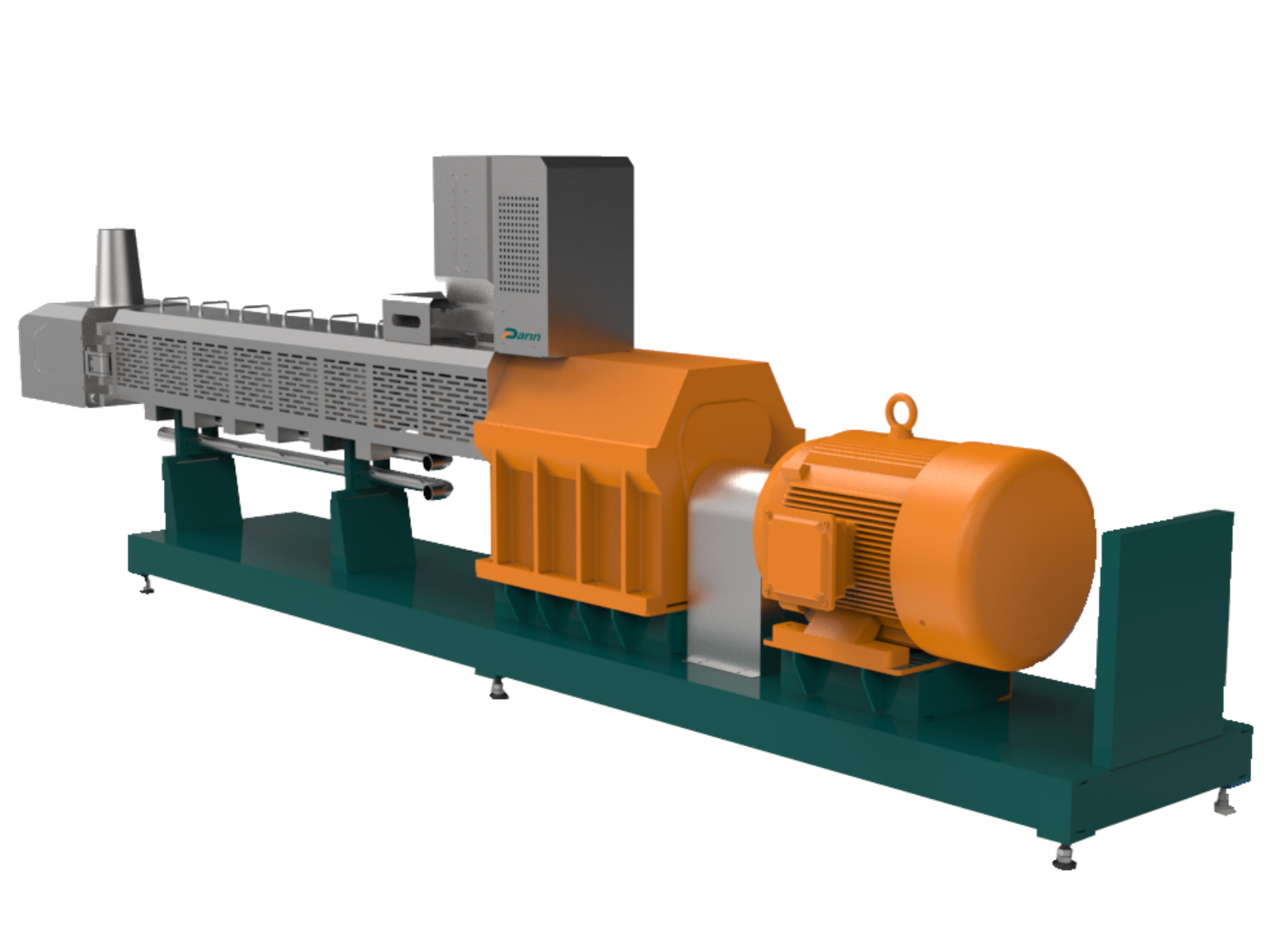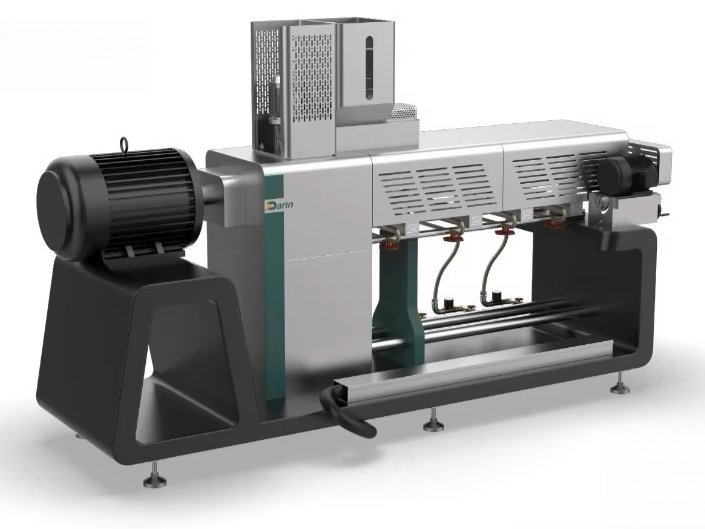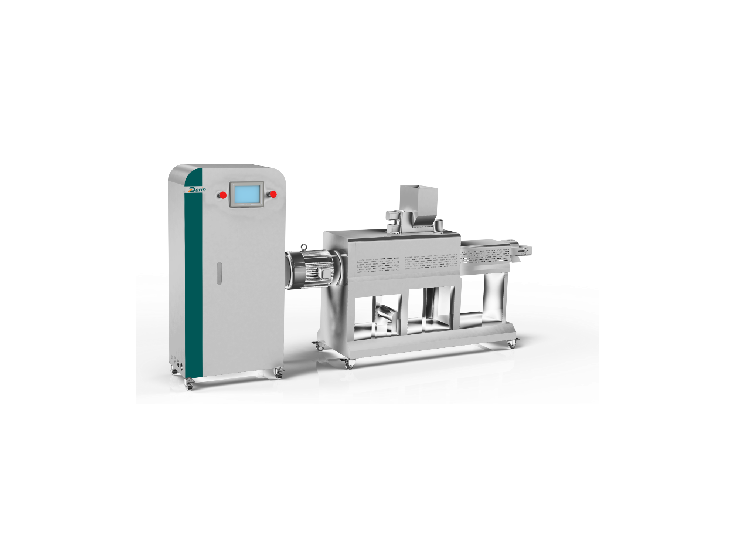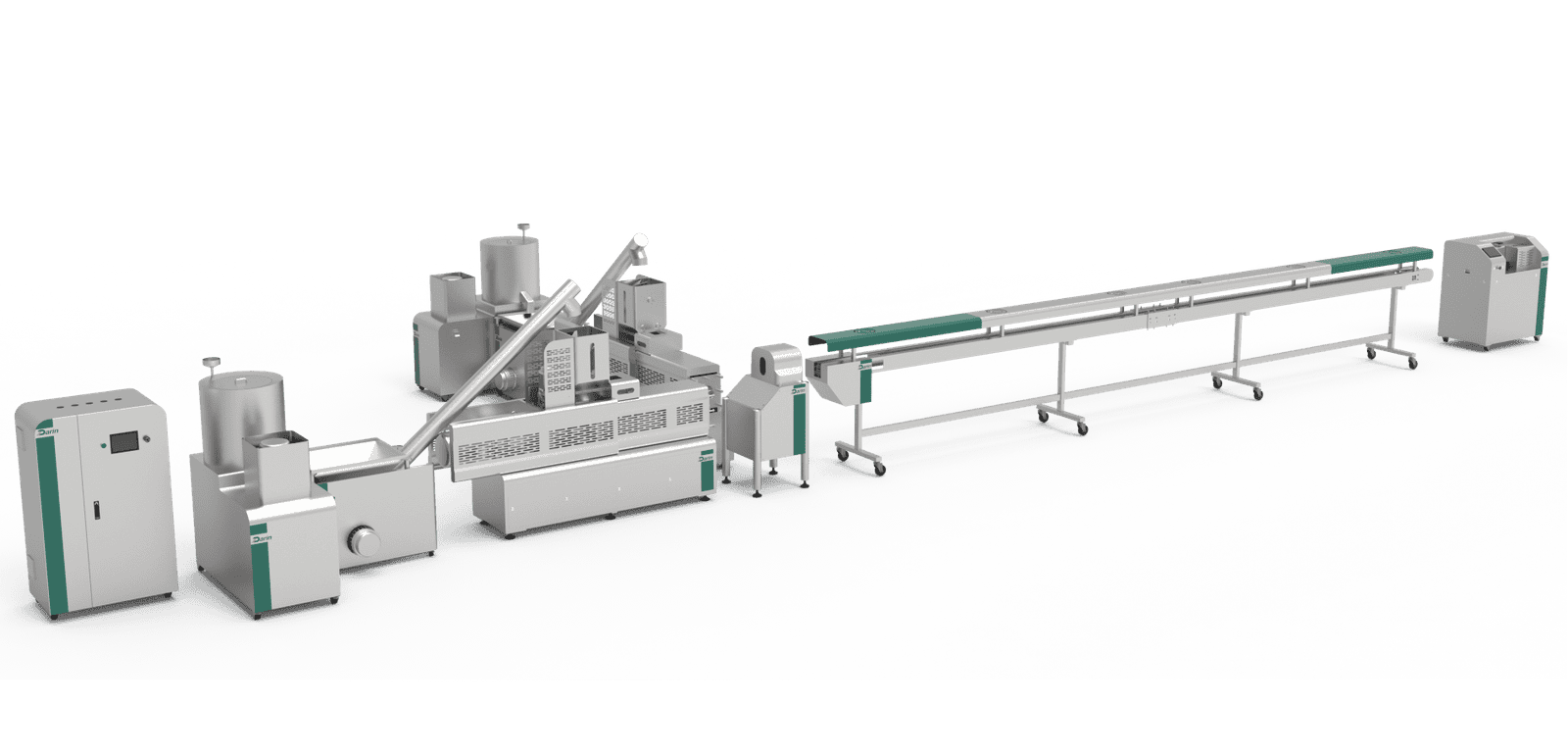
Dog food manufacturing may look simple when you see a bag of kibble or a can on a supermarket shelf, but behind it is a highly controlled and technology-driven process. If the process is not optimized, problems like nutritional imbalance, contamination, poor shelf life, or inconsistent texture can occur—leading to product recalls, brand damage, and financial losses. To prevent this, professional pet food manufacturers rely on advanced processing lines that control every stage: from ingredient selection to extrusion, drying, coating, and packaging. Understanding the detailed steps can help decision-makers plan investments, optimize efficiency, and ensure safe, high-quality pet food production.
Dog food is made step by step through a series of controlled operations: ingredient selection and grinding, mixing and formulation, extrusion or canning, drying and cooling (for dry food), coating and flavoring, and finally packaging and quality assurance. Each step requires specialized machinery, strict hygiene, and compliance with food safety standards to ensure balanced nutrition, consistency, and long shelf life.
In this first part of the guide, we will walk through the complete industrial process step by step, explaining the role of each stage, the equipment involved, and the technical considerations. Keep reading, because by the end you will not only understand “how dog food is made” but also have a blueprint for building or upgrading your own pet food production line.
Dog food is typically manufactured in the same way as human food, using the same machinery.False
Although pet food shares some principles with human food processing, it requires specialized extrusion, coating, and drying equipment designed for animal nutrition.
Step 1: Ingredient Selection, Grinding, and Pre-Processing
The foundation of quality dog food is its ingredients. Manufacturers typically source proteins (meat meal, poultry by-products, fish meal), cereals (corn, rice, wheat, barley), vegetable proteins (soybean meal, pea protein), fats, vitamins, and minerals. These raw materials must be selected according to regulatory standards (AAFCO, FEDIAF, GB standards in China) and customer formulation requirements.
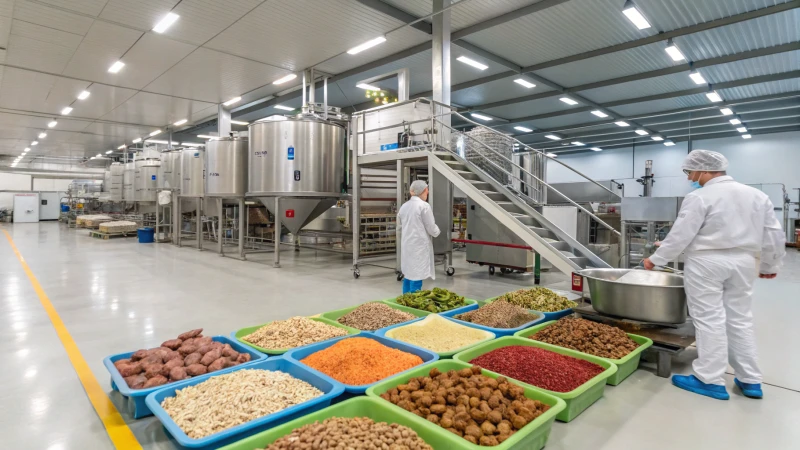
Key Processes in Ingredient Selection, Grinding, and Pre-Processing:
Raw Material Receiving & Storage
- Meat meals and grains are stored in silos or bins.
- Temperature and humidity are monitored to avoid spoilage.
Grinding / Milling
- Raw grains and meals are passed through hammer mills or roller mills to achieve uniform particle size.
- Target particle size: typically 250–600 microns for optimal extrusion performance.
Pre-treatment of Fresh Meat (if used)
- Frozen meat blocks are thawed, cut, and minced.
- Fresh meat slurry may be pasteurized before mixing.
Quality Control
- Microbiological testing (Salmonella, E. coli).
- Nutritional content verification (protein %, fat %, ash %, moisture).
Table 1: Common Ingredients and Their Functions in Dog Food
| Ingredient Type | Examples | Function in Dog Food |
|---|---|---|
| Protein Sources | Chicken meal, fish meal, beef | Builds muscle, tissue repair, essential amino acids |
| Cereals/Carbs | Corn, rice, wheat, barley | Provides energy, improves extrusion texture |
| Fats & Oils | Poultry fat, fish oil, lard | Energy density, palatability, omega fatty acids |
| Fiber Sources | Beet pulp, cellulose, pea fiber | Digestive health, stool quality |
| Vitamins & Minerals | Vitamin premix, calcium, zinc | Immune support, bone development, metabolic health |
Grinding and pre-processing ensure that when ingredients enter the mixing and extrusion steps, they are uniform and stable. Without this preparation, extrusion efficiency suffers, leading to poor kibble shape and density.
Step 2: Mixing and Formulation
Once ingredients are ground to the proper particle size, they move into the mixing and formulation stage. This is where the actual "recipe" of the dog food is created, ensuring that every kibble or can provides complete and balanced nutrition. A precise formulation is crucial, because even small deviations in vitamins, minerals, or protein-to-fat ratios can lead to health problems in pets and compliance issues for the manufacturer.
Key Processes in Mixing and Formulation:
Weighing and Dosing
- Automated batching systems weigh each ingredient according to the formulation (e.g., 25% chicken meal, 40% corn, 10% soy protein, etc.).
- Micro-ingredients like vitamins, minerals, and additives are dosed in very small but precise amounts using micro-dosing systems.
Dry Mixing
- Ground cereals, meals, and dry powders are mixed in horizontal ribbon blenders or paddle mixers.
- Mixing time typically ranges from 90 to 180 seconds, ensuring homogeneous distribution.
Addition of Liquids
- Fats, oils, molasses, or liquid enzymes may be sprayed into the mix.
- Controlled spray systems prevent clumping and guarantee uniform coating.
Preconditioning (Optional)
- Some advanced production lines use preconditioners that inject steam and water into the mixture before extrusion.
- This begins the gelatinization of starch and improves digestibility.
Formulation Validation
- Nutritional software ensures compliance with AAFCO/FEDIAF/GB standards.
- Samples are tested for protein, fat, ash, moisture, and fiber levels.
Example of Dry Dog Food Nutritional Formulation
| Nutrient | Typical Range in Kibble (%) | Functional Role for Dogs |
|---|---|---|
| Crude Protein | 20–30% | Muscle and tissue growth |
| Crude Fat | 8–18% | Energy, skin and coat health |
| Crude Fiber | 3–6% | Digestion, stool quality |
| Ash (Minerals) | 6–9% | Bone health, metabolism |
| Moisture | 8–12% | Shelf life stability |
Formulation is often supported by software that balances nutrient-to-energy ratios and ensures compliance with labeling regulations. For instance, a dog food label that states "Complete & Balanced" must meet the defined nutrient profile for the intended life stage (puppy, adult, senior).
Why Mixing and Formulation Matter
- Nutritional Consistency: Ensures each serving provides identical nutrient levels.
- Extrusion Performance: Uniform mixes expand and shape better during extrusion.
- Food Safety: Reduces risk of over-supplementation or deficiency.
Dog food recipes are mixed by hand in small batches in most modern factories.False
Modern dog food factories use automated dosing and mixing systems to ensure precision, efficiency, and compliance with regulatory standards.
Step 3: Extrusion and Cooking
Extrusion is the heart of dry dog food production. This is where raw mixed ingredients are transformed into digestible, safe, and attractive kibble. The extrusion process combines mechanical pressure, heat, moisture, and shear force to cook starches, denature proteins, and kill pathogens, while also shaping the dough into consistent kibble pieces. Without extrusion, dry dog food would be unstable, less digestible, and far more vulnerable to contamination.
Key Processes in Extrusion and Cooking:
Feeding and Preconditioning
- The mixed meal is fed into a preconditioner, where steam and water are injected to increase moisture (up to 25–30%) and temperature (70–90°C).
- This partial cooking step softens ingredients, improves starch gelatinization, and enhances extrusion efficiency.
Extrusion Cooking
- Preconditioned meal enters the extruder barrel, where twin-screw or single-screw extruders apply pressure, shear, and heat.
- Inside the extruder, temperature rises to 110–160°C and pressure can reach 20–30 bar.
- Starches gelatinize, proteins denature, and microbial pathogens are eliminated.
Shaping through Dies
- The cooked dough is forced through a die plate that determines the kibble shape (round, bone-shaped, square, etc.).
- Die and knife systems cut kibble to uniform sizes ranging from 5 mm (puppy) to 20 mm (large breed).
Expansion & Texture Formation
- As kibble exits the die, the sudden drop in pressure causes water to flash off as steam.
- This expansion creates the porous texture that makes kibble light, crunchy, and easy to chew.
Extruder Control Systems
- PLC-controlled extruders regulate screw speed, barrel temperature, and moisture input.
- This ensures consistency in kibble density, expansion, and cooking level.
Table 2: Extrusion Parameters and Their Effects on Dog Food Quality
| Parameter | Typical Range | Effect on Kibble |
|---|---|---|
| Barrel Temperature | 110–160°C | Higher temperature increases starch gelatinization and sterilization |
| Moisture Content | 20–30% | Controls expansion, prevents burning, improves texture |
| Screw Speed | 200–600 rpm | Affects shear force, density, and uniformity |
| Die Size & Shape | 3–20 mm | Determines kibble size, shape, and bite force |
| Pressure | 20–30 bar | Critical for texture formation and pathogen kill rate |
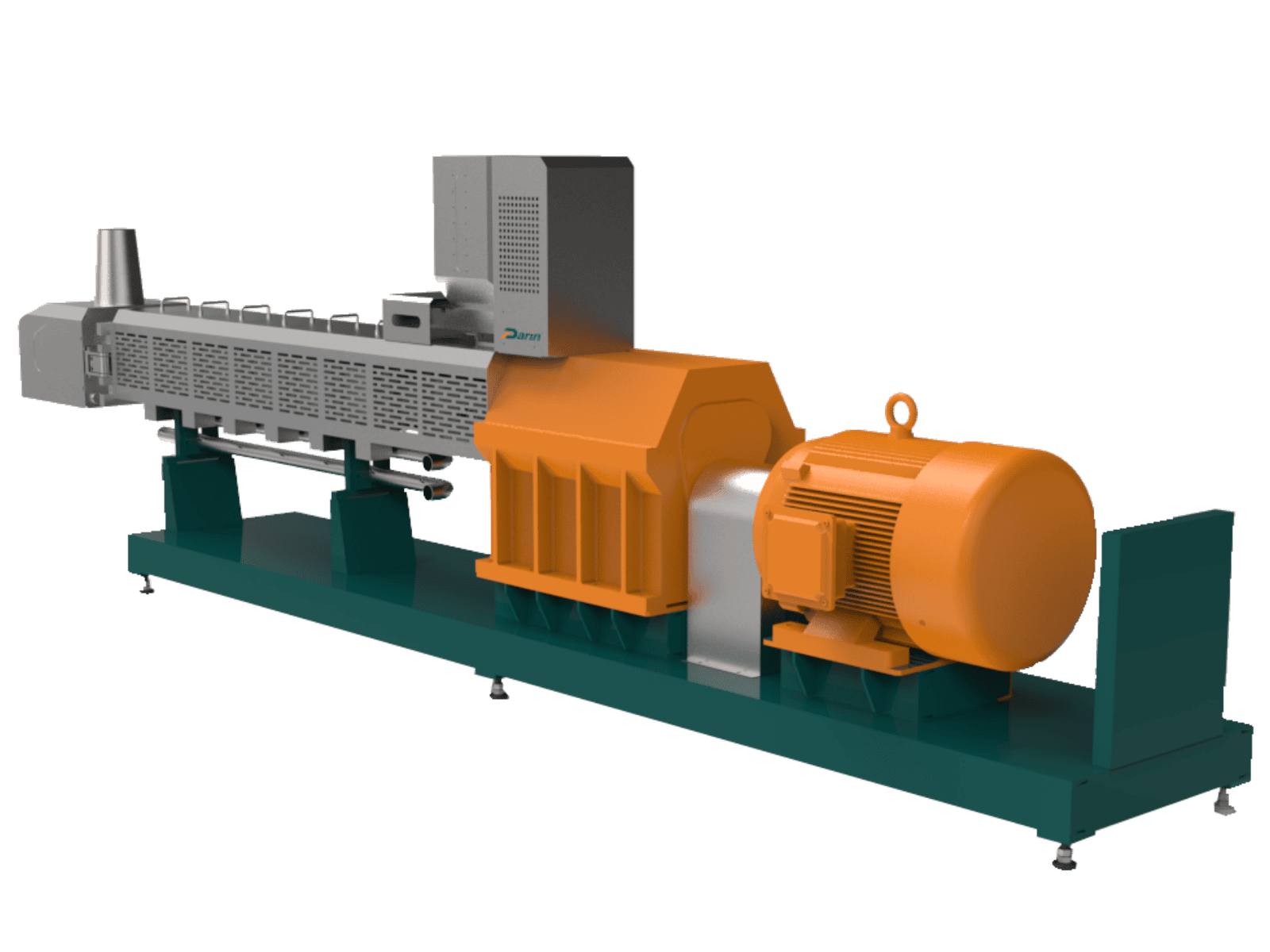
Why Extrusion Is Critical
- Digestibility: Increases starch digestibility from 40–60% (raw) to >90%.
- Safety: Kills bacteria like Salmonella and E. coli.
- Product Variety: Enables endless shapes and textures for branding.
- Shelf Life: Reduces moisture and creates a stable matrix for packaging.
Extrusion only shapes dog food but does not cook it.False
Extrusion is both a cooking and shaping process; it uses heat, pressure, and shear to cook ingredients, sterilize them, and form kibble.
At this stage, we now have freshly extruded kibble. However, the product is still too moist (20–30% moisture) and would spoil quickly if packaged. That’s why the next step is crucial: drying and cooling.
👉 Do you want me to continue with Step 4: Drying and Cooling, where the kibble becomes shelf-stable and ready for coating?
Step 4: Drying and Cooling
Once kibble leaves the extruder, it still contains 20–30% moisture—far too high for safe storage or packaging. If packaged at this stage, the food would quickly spoil, grow mold, or lose nutritional integrity. Therefore, the next critical stage is drying and cooling, which reduces moisture to safe levels and stabilizes the kibble’s structure. This step ensures the dog food will have a shelf life of 12–18 months without microbial risks.
Key Processes in Drying and Cooling:
Conveying to Dryer
- Freshly extruded kibble is transferred via vibratory or belt conveyors into a multi-layer dryer.
- Conveyor systems are enclosed to prevent contamination.
Multi-Layer Drying
- Kibble passes through multi-pass belt dryers, where hot air is circulated evenly.
- Drying temperature: 90–130°C depending on recipe and moisture content.
- Airflow is carefully controlled to avoid case-hardening (outer crust forming while inner core remains wet).
- Moisture content is reduced from 20–30% to 8–10%.
Moisture Uniformity Control
- Infrared moisture sensors monitor product in real-time.
- PLC systems adjust air temperature and belt speed automatically.
Cooling
- Dried kibble enters a counter-flow cooler, where ambient or chilled air passes through kibble layers.
- Cooling reduces product temperature to within 5°C of room temperature, preventing condensation in bags.
Post-Cooling Sieving
- Oversized or broken kibble is removed using rotary sieves.
- Dust is extracted to maintain hygiene and improve product presentation.
Table 3: Moisture Levels in Dog Food During Processing
| Stage | Moisture (%) | Purpose |
|---|---|---|
| After Mixing | 10–12% | Stable dry meal ready for extrusion |
| After Extrusion | 20–30% | High moisture needed for expansion and cooking |
| After Drying | 8–10% | Safe shelf-stable range |
| After Cooling | 8–10% | Stable, ambient temperature prevents condensation |
Importance of Drying and Cooling
- Shelf Stability: Low moisture prevents bacterial and mold growth.
- Nutritional Integrity: Preserves vitamins, fats, and proteins from degradation.
- Physical Quality: Ensures kibble is crunchy but not brittle.
- Energy Efficiency: Modern dryers recover heat and minimize fuel consumption.
Dog food can be packaged immediately after extrusion without drying.False
Extruded kibble must be dried and cooled to reduce moisture to 8–10% before packaging; otherwise, it will spoil within days.
Step 5: Coating and Flavoring
Now that the kibble has been dried and cooled to a safe and stable condition, the next step is coating and flavoring, also called post-extrusion treatment. This stage is vital for two main reasons: it enhances the palatability (taste, smell, and mouthfeel) of the food so dogs will eagerly eat it, and it improves the nutritional profile by adding heat-sensitive ingredients that could not survive the extrusion process.

Key Processes in Coating and Flavoring:
Fat and Oil Application
- Warm animal fats (chicken fat, beef tallow) or vegetable oils are sprayed onto the kibble in a vacuum coater or drum coater.
- This increases energy density and improves flavor.
- Typical inclusion: 3–8% of finished product weight.
Palatant Application (Flavor Enhancers)
- Palatants are sprayed or dusted to enhance aroma and taste.
- Common palatants include hydrolyzed liver digest, yeast extracts, fish hydrolysates, and smoke flavorings.
- Palatants directly influence pet acceptance in feeding trials.
Heat-Sensitive Nutrient Addition
- Vitamins (A, D, E, K, B-complex), probiotics, enzymes, and omega-3 fatty acids are added post-extrusion because they degrade under high heat.
- Applied through precision spraying to ensure even coverage.
Vacuum Coating Technology (Advanced Systems)
- In vacuum coaters, kibble is placed in a sealed chamber, air is removed, and liquid fats/nutrients are absorbed deeply into the kibble core.
- This improves stability, prevents surface greasiness, and allows higher fat inclusion.
Final Quality Control Checks
- Coating uniformity is tested to ensure every kibble piece has identical nutritional and sensory value.
- Palatability tests are conducted with dogs in feeding trials to measure preference and acceptance rates.
Table 4: Typical Coating Ingredients and Their Functions
| Coating Ingredient | Typical Inclusion | Function in Dog Food |
|---|---|---|
| Chicken fat, beef tallow | 3–8% | Improves palatability, energy density, aroma |
| Fish oil (salmon oil) | 1–3% | Provides omega-3 fatty acids, skin & coat benefits |
| Liver digest (spray-dried) | 1–2% | Strong aroma and taste appeal |
| Yeast extract | 0.5–1% | Enhances umami flavor, provides B-vitamins |
| Vitamin/mineral premix | Trace amounts | Corrects heat-sensitive nutrient losses |
Why Coating and Flavoring Matter
- Palatability: Dogs select food largely by smell; coatings ensure they find kibble irresistible.
- Nutrition: Heat-sensitive nutrients added post-extrusion maintain efficacy.
- Product Differentiation: Flavor profiles (chicken, beef, salmon, lamb) create brand variety.
- Digestive Health: Enzymes and probiotics can be added to improve gut function.
All nutrients in dog food are added before extrusion.False
Many heat-sensitive nutrients such as vitamins, probiotics, and omega-3 oils are added after extrusion during the coating stage to preserve their effectiveness.
Step 6: Packaging and Quality Assurance
After drying, cooling, and coating, the dog food is now ready for market—but the final stage, packaging and quality assurance (QA), is just as critical as the processing itself. Proper packaging not only protects the kibble from contamination, oxidation, and moisture but also provides customers with accurate labeling information. Meanwhile, QA ensures that every batch meets nutritional and safety standards before leaving the factory.
Key Processes in Packaging and Quality Assurance:
Final Sieving and Metal Detection
- Before packaging, kibble passes through sieves to remove fines and broken pieces.
- Metal detectors ensure no foreign bodies (ferrous, non-ferrous, or stainless steel) are present.
Packaging Formats
- Small bags (500g–5kg): Common for retail customers, designed with resealable zippers.
- Medium bags (10–20kg): Popular for breeders and multi-pet households.
- Bulk sacks (25–50kg): Used for distribution to farms, shelters, or repackaging centers.
- Vacuum or nitrogen-flushed packaging: Protects fats and vitamins from oxidation, extending shelf life.
Bagging and Sealing
- Kibble is weighed automatically by multi-head weighers.
- Bags are filled, sealed (heat-sealed, stitch-sealed, or ultrasonic-sealed), and labeled.
- Advanced lines include inline nitrogen flushing systems to minimize oxygen inside the bag.
Labeling Compliance
- Labels must include guaranteed analysis (protein, fat, fiber, moisture), ingredients list, feeding guidelines, manufacturer details, batch/lot number, and expiration date.
- Must comply with AAFCO (USA), FEDIAF (EU), GB (China) or regional regulations.
Quality Assurance (QA) Testing
Routine checks for:
- Nutritional Analysis: Protein, fat, fiber, vitamins.
- Microbiological Safety: Salmonella, molds, yeasts.
- Physical Properties: Density, kibble size, color.
- Shelf Life Testing: Accelerated oxidation and storage trials.
Palletizing and Storage
- Finished bags are stacked on pallets, shrink-wrapped, and stored in climate-controlled warehouses (temperature 15–25°C, low humidity).
- Inventory is managed by lot number for traceability and recall readiness.
Table 5: Key Packaging Options for Dry Dog Food
| Packaging Type | Typical Size | Advantages |
|---|---|---|
| Paper/poly bags | 500g–20kg | Economical, printable surfaces, recyclable options |
| Multi-layer plastic | 2–20kg | High barrier to oxygen and moisture, resealable |
| Bulk woven sacks | 25–50kg | Cost-effective for bulk sales, durable |
| Nitrogen-flushed bags | 2–10kg | Extends shelf life, preserves fat and vitamin quality |
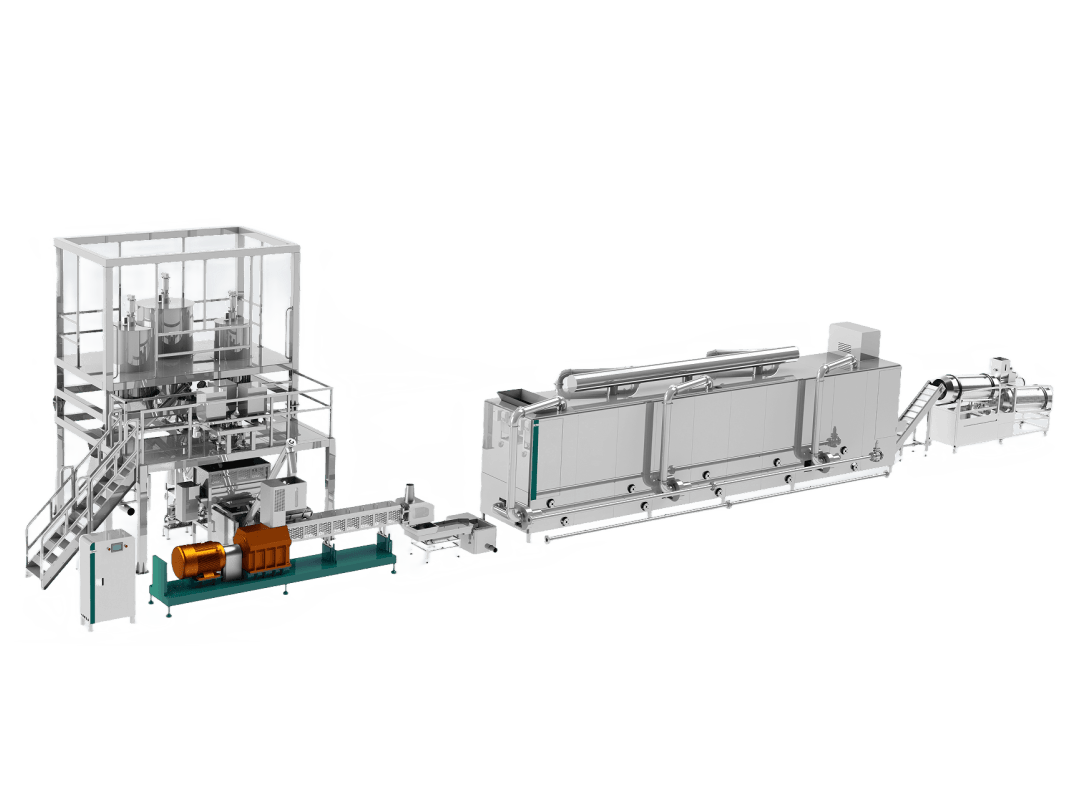
Why Packaging and QA Matter
- Safety: Prevents contamination and ensures food reaches pets in optimal condition.
- Shelf Life: Advanced barrier films and nitrogen flushing keep kibble fresh for up to 18 months.
- Trust: Accurate labeling and certifications build customer confidence.
- Compliance: Meeting regulatory standards avoids fines and product recalls.
Dog food can skip packaging checks if ingredients are safe.False
Every batch of dog food must undergo packaging and quality assurance checks to ensure nutritional consistency, microbial safety, and regulatory compliance.
Wrapping It Up in Simple Words
So, that’s the step-by-step process of how dog food is made—a mix of science, engineering, and strict quality control. Next time you pick up a bag of kibble, you’ll know the story behind it: carefully selected ingredients, precision machinery, and rigorous safety testing, all designed to give pets the nutrition they deserve.
Ready to Build or Upgrade Your Dog Food Production Line?
At Darin Machinery, we specialize in complete dog food and pet treat production lines, including grinders, mixers, extruders, dryers, coaters, and packaging systems. Whether you’re starting a new pet food plant or upgrading an existing one, our solutions are designed for efficiency, compliance, and premium product quality.
📩 Contact us today at darin4@darin.cn or visit 🌐 petreatsmachine.com to explore our equipment and solutions.
Because when it comes to pet food, your success starts with the right machinery.
